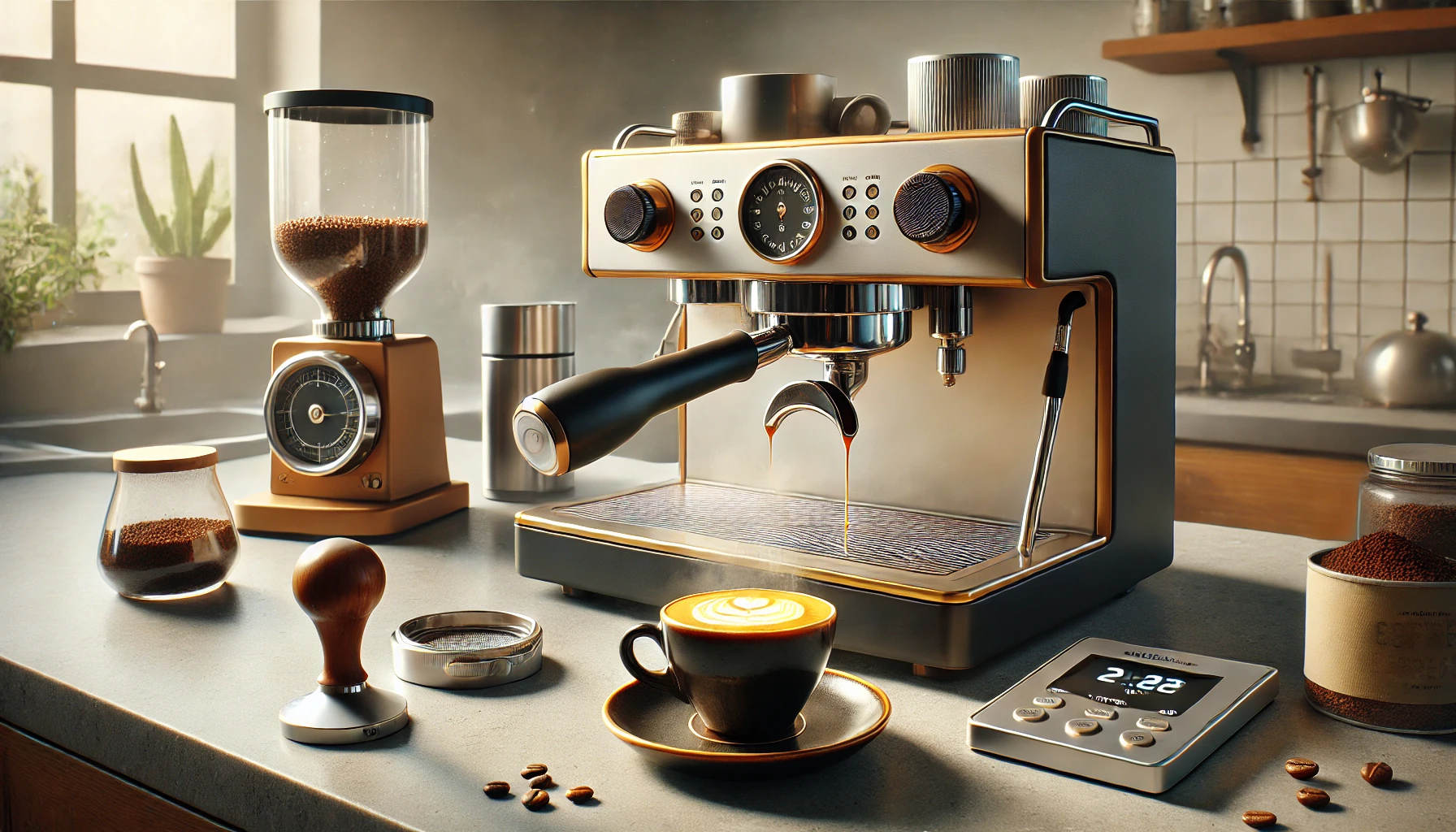Espresso is the foundation of many beloved coffee drinks—from cappuccinos and lattes to macchiatos and flat whites. But even on its own, a well-prepared espresso is a small, powerful shot of flavor, aroma, and crema. And while it may seem like something only a barista can master, making great espresso at home is entirely possible with the right knowledge and equipment.
Whether you’re just getting started or refining your technique, this guide will help you pull rich, balanced shots from the comfort of your kitchen.
What Is Espresso?
Espresso is a concentrated coffee beverage brewed by forcing hot water through finely ground coffee under high pressure. The result is a small shot (usually 25–30 ml) with an intense flavor and a signature layer of crema on top.
Unlike drip or French press coffee, espresso emphasizes body, boldness, and mouthfeel. It’s not about volume—it’s about quality in a single sip.
The Equipment You’ll Need
To make real espresso at home, you’ll need more than a standard coffee maker. Here’s what you’ll want for authentic results:
Espresso Machine
A proper espresso machine uses 9 bars of pressure to extract the coffee. Home options range from manual lever machines to semi-automatic and fully automatic models.
Popular home brands include Breville, Gaggia, De’Longhi, and Rancilio. For better control and learning, a semi-automatic machine is ideal.
Burr Grinder
Grind size is crucial for espresso. A burr grinder allows for precise control and uniformity, unlike blade grinders which create uneven particles.
You’ll need a fine grind, almost like powdered sugar, but still slightly gritty to the touch.
Tamper
Once the coffee is dosed into the portafilter, you’ll need a tamper to evenly compress the grounds, creating resistance for proper extraction. Some machines include a plastic tamper, but a solid, flat metal one is far more effective.
Scale and Timer (Optional but Valuable)
A digital scale ensures you’re using the correct dose (usually 18–20 grams for a double shot), and a timer helps you monitor the extraction time (aim for 25–30 seconds).
Choosing the Right Coffee Beans
Espresso can be made from any type of coffee bean, but for the best results:
- Choose medium to dark roasts for a balanced espresso profile
- Look for beans labeled as espresso blend or suitable for espresso
- Opt for freshly roasted beans (within 2–4 weeks of roast date)
- Arabica beans offer sweeter, more nuanced flavors, while blends with Robusta produce thicker crema and more intensity
Step-by-Step: How to Make Espresso at Home
Step 1: Preheat Your Machine
Turn on your espresso machine and let it warm up for at least 15–20 minutes. Preheat your portafilter and cup by running hot water through them—this ensures temperature stability during extraction.
Step 2: Grind and Dose the Coffee
Grind 18–20 grams of coffee (for a double shot). The grind should be fine, but not too powdery. Adjust depending on your machine and bean freshness.
Dose the coffee evenly into the portafilter basket, making sure the surface is level.
Step 3: Tamp Evenly and Firmly
Use your tamper to press down the coffee with consistent pressure (around 30 lbs of force). The tamp should be flat and even—no tilted surfaces or loose edges.
Proper tamping creates uniform resistance for water to pass through, which is key to a balanced extraction.
Step 4: Start the Shot and Time It
Lock the portafilter into the machine. Start the extraction and begin timing. A well-balanced double shot should yield about 36–40 ml in 25 to 30 seconds.
If the shot comes out too quickly, the grind is too coarse. If it takes too long or drips slowly, the grind is too fine or you tamped too hard.
Step 5: Observe the Crema and Taste
A good espresso shot should have a thick, golden crema on top. Swirl the espresso before tasting to mix layers of flavor.
The taste should be rich, smooth, and slightly sweet—not sour or overly bitter. If it’s unbalanced, adjust the grind or dose for your next attempt.
Espresso Troubleshooting Tips
- Shot is sour? Try a finer grind or increase brew time.
- Shot is bitter? Try a coarser grind or shorten the extraction.
- No crema? Beans might be too old, or grind too coarse.
- Water too cold? Ensure your machine is fully preheated.
Dialing in your espresso takes practice, so don’t be discouraged by a few failed attempts. Consistency comes with repetition and attention to detail.
Cleaning and Maintenance
Espresso machines need regular maintenance to function well and stay sanitary.
- Backflush your machine weekly (or daily if used often)
- Clean the portafilter and basket after every use
- Descale every few months if using tap water
- Wipe down the steam wand after every milk-based drink
Clean gear makes better coffee and extends the life of your machine.
Optional: Milk Steaming and Latte Art
If your machine includes a steam wand, you can create drinks like cappuccinos and lattes.
Use cold whole milk and steam until the milk reaches 60–65°C (140–150°F). Aim for a smooth, velvety microfoam—not large bubbles.
To try basic latte art, start with a well-extracted espresso and pour the steamed milk in a steady stream, using subtle wrist motions. It takes practice but adds a fun, creative element to your coffee routine.
Final Thoughts: Your Café at Home
Making espresso at home is both an art and a science. While it might seem intimidating at first, it’s a rewarding hobby that allows you to experiment, customize, and develop a deeper appreciation for what goes into each tiny, powerful shot.
With the right tools and some practice, you can enjoy high-quality espresso without stepping foot in a coffee shop. So fire up your machine, grind some fresh beans, and enjoy the process—one delicious shot at a time.
